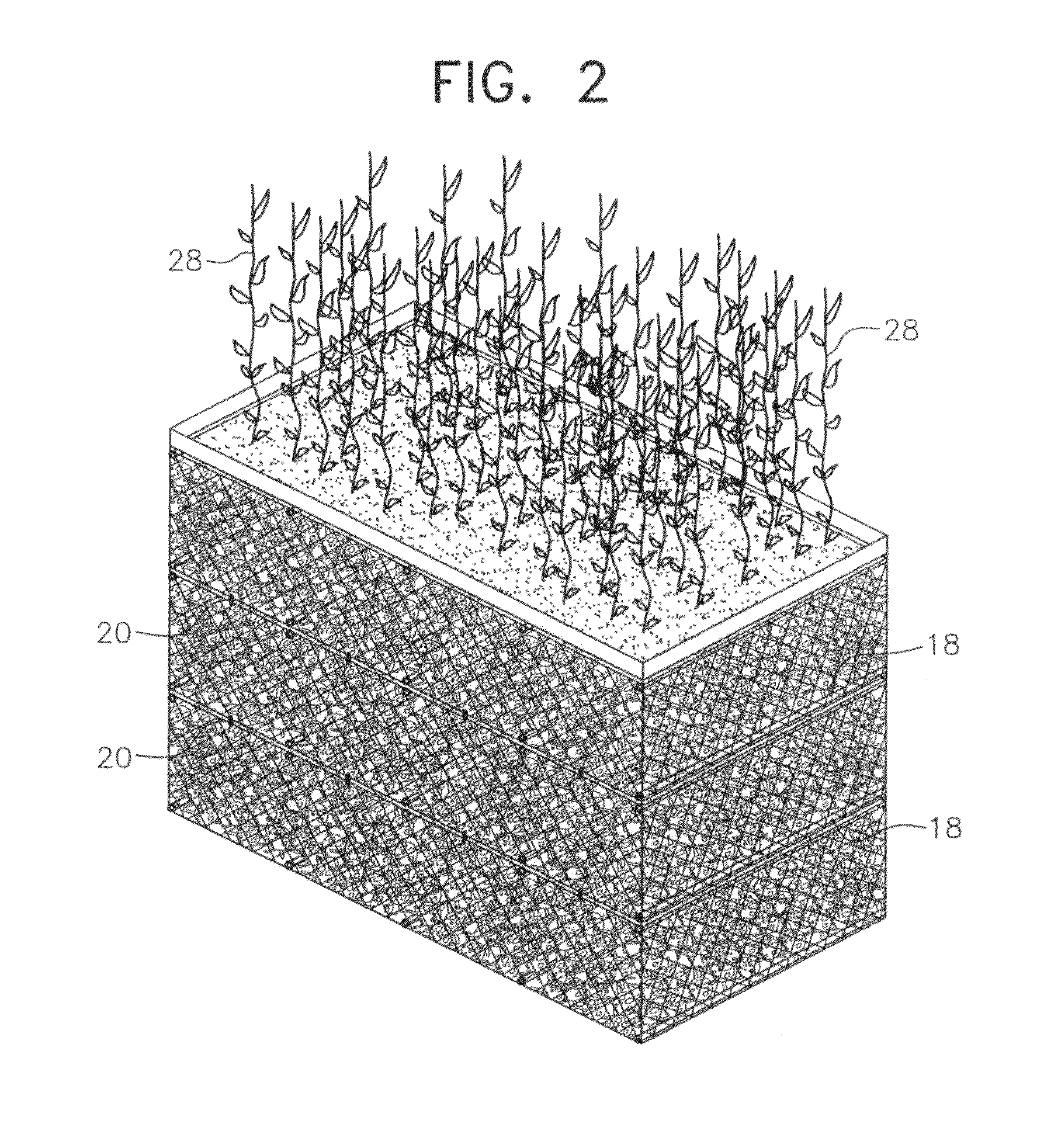Apparatus merging wetland plants with a floating substrate to treat pollution in any river, lake or body of water
a technology of floating substrates and wetland plants, which is applied in the direction of water cleaning, separation processes, filtration separation, etc., can solve the problems of inapplicability, and achieve the effect of oxidizing-reducing organic and inorganic pollutants
- Summary
- Abstract
- Description
- Claims
- Application Information
AI Technical Summary
Benefits of technology
Problems solved by technology
Method used
Image
Examples
Embodiment Construction
[0060]In describing a preferred embodiment of the invention illustrated in the drawings, specific terminology will be resorted to for the sake of clarity. However, the invention is not intended to be limited to the specific terms so selected, and it is to be understood that each specific term includes all technical equivalents which operate in a similar manner to accomplish a similar purpose.
[0061]With reference to drawings, in general, and to FIGS. 1 and 2, in particular, an apparatus merging wetland plants with a floating substrate to treat pollution in any river, lake or body of water providing the teachings of the subject invention is generally designated as 10. With reference to its orientation in FIG. 1, a wetland plants' supporting system includes three tiers 12, 14, 16 of plastic coated wire framed baskets. Each basket includes a plurality of solid support rods 18 spaced along the upper and lower edges of each basket. In addition, basket 12 is connected to basket 14 and bask...
PUM
| Property | Measurement | Unit |
|---|---|---|
| area | aaaaa | aaaaa |
| temperatures | aaaaa | aaaaa |
| temperatures | aaaaa | aaaaa |
Abstract
Description
Claims
Application Information
 Login to View More
Login to View More - R&D
- Intellectual Property
- Life Sciences
- Materials
- Tech Scout
- Unparalleled Data Quality
- Higher Quality Content
- 60% Fewer Hallucinations
Browse by: Latest US Patents, China's latest patents, Technical Efficacy Thesaurus, Application Domain, Technology Topic, Popular Technical Reports.
© 2025 PatSnap. All rights reserved.Legal|Privacy policy|Modern Slavery Act Transparency Statement|Sitemap|About US| Contact US: help@patsnap.com



